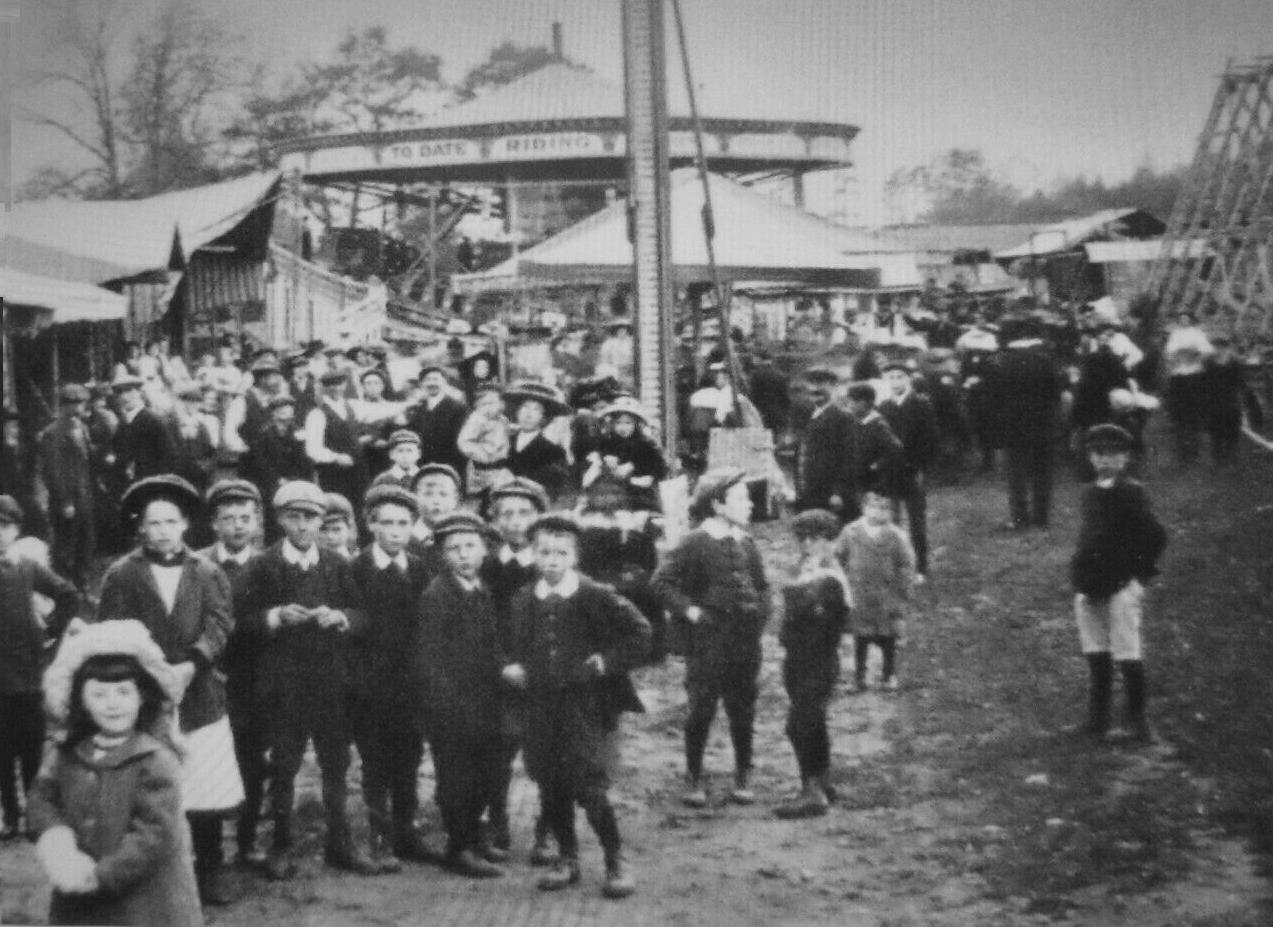
Figure 1.--This photograph is English. It shows a group of children, mostly boys at a fun fair or the rides area of a larger fair, . Ot is undated. We would guess it was taken bout 1910. |

|
The fair is an event of ancient origins. The modren fair has evolved from medieval traveling caravans of merchants and entertainers. There were also ancvient predecesors with whichnless is known, but there are connections with the hravest season as well as religious worship and feasting. The origins of the term comes from Latin 'feriae' meaning days of holiday, rest, and feasting. Fairs became part of the quickening of commerce as Europe moved out of the Dark Ages. Fairs developed in market towns whih also became religious centers such as cathedral cities. They that drew large numbers of people for religious ceremonies, but these were often not solem occassions. The events drew merchants, vendors, and entertainers of all sorts (acrobats, actors, clowns and musicians). This was not just a European phenomenon. We see similar events in Africa, Asia, Latin America, and the Middle East. The Haj is a religious pilgrimage which even today includes a caravan of traders. There was an association with agriculture at historic fairs. The basis of ecomomies through the 18th century was primarily agriculture. Most people lived in ther country and were involved in farming. Crowds were generated by atracting rural people into the towns and cities for the religious events, enterainment, food, and more. Farm produce could be sold and livestock traded. The industrial revolution changed the nature of many fairs. Populations grew in the cities and increasingly fairs became more purely entertaiment events. Some were even called 'fun fairs'. Items once sold in fairs were now sold in shops. There were still agricultural fairs and shows, but urban fairs often had little agricultural connections. In America the agricultural fair became major ecents. Elkanah Watson was a major figure in the development of the American agricultural fair. Watson founded the Berkshire Agricultural Society in the Commonwealth of Massachusetts in 1810 and, at its second annual meeting, the Society offered prizes in a competitive display of livestock. This was just the beginning. Prizes and certificates for excellence were awarded for livestock, field and orchard crops, and handicrafts. There were all kinds of contests: plowing, spinning, cooking, sewing, races. and much more. Parades with marching band were a popular attrction. And all kinds of tasty treats began to be offered. Commerce, competition and celebration became the major ingredients of popular agricukltural fairs. Fun ridessuch as the carosel appered and were popular with the children. They were held at the country and state levels and have continued into the modern industrail era.
Navigate the Boys' Historical Clothing Web Site:
[Return to the Main activities away from home page]
[Return to the Main Activities page]
[Introduction]
[Biographies]
[Catalogs]
[Chronology]
[Clothing styles]
[Countries]
[Literary]
[Bibliographies]
[Contributions]
[FAQs]
[Glossaries]
[Images]
[Links]
[Registration]
[Tools]
[Boys' Clothing Home]
Navigate the Boys' Historical Clothing Web Site:
[Sailor suits]
[Sailor hats]
[Buster Brown suits]
[Eton suits]
[Rompers]
[Tunics]
[Smocks]
[Pinafores]
